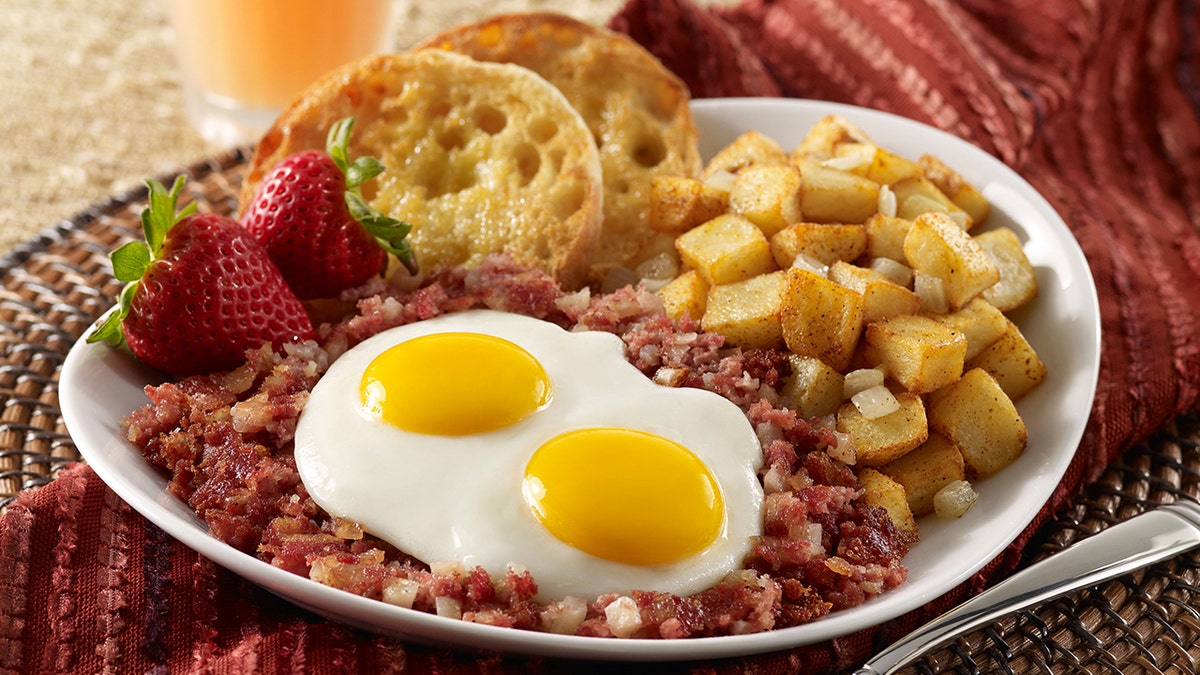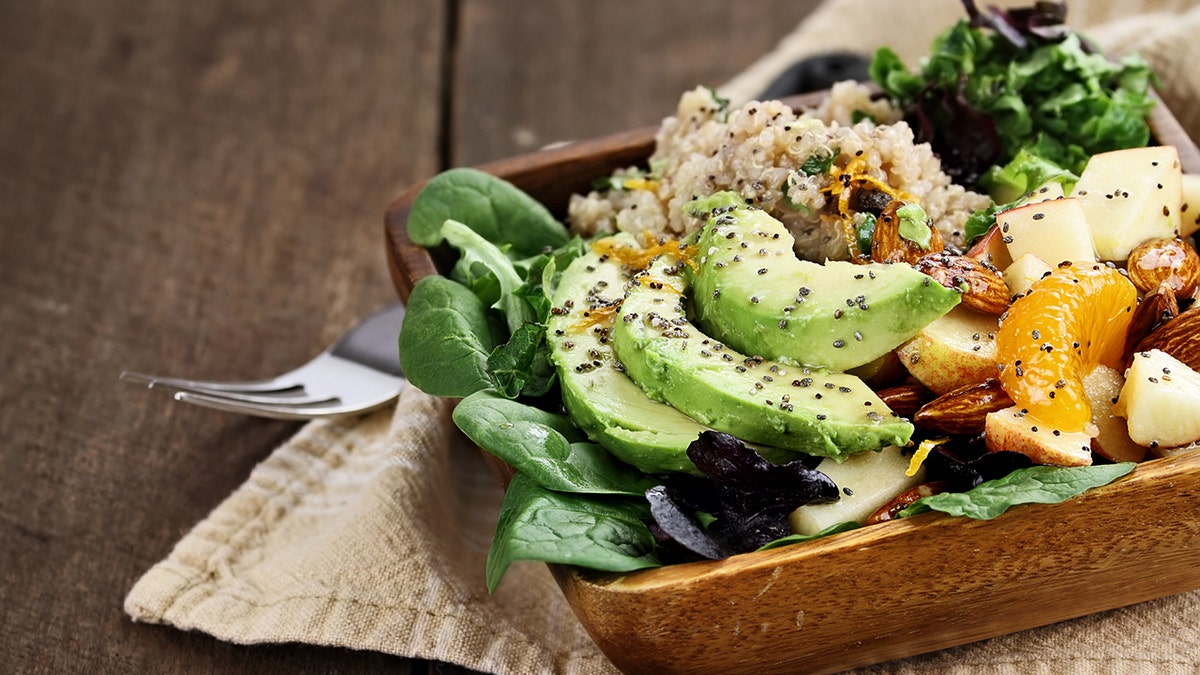Fox News Flash top headlines for June 24
Fox News Flash top headlines are here. Check out what's clicking on Foxnews.com.
Starting your day with a nutritious and filling breakfast is vital for maintaining energy levels and focus until lunch.
Many Americans turn to eggs for their first meal of the day for ease, affordability and taste.
"Eggs are a popular choice due to their versatility and high-protein content, but not all egg breakfasts are created equal," said Annelise Prigge MS, RD, a registered dietitian and nutritionist with Anne Till Nutrition Group in Raleigh, North Carolina.
GET CRACKING: THESE ARE THE BEST EGGS FOR YOUR HEALTH, ACCORDING TO NUTRITIONISTS
Whether your egg breakfast of choice is scrambled or hard-boiled, fried or poached, nutrition experts revealed the best ways to elevate your eggs to keep you full until lunch — plus to pack in nutritional benefits.
What factors contribute to a full feeling?
Fullness and satiety after meals are influenced by several factors, including protein, fiber and food volume. said Prigge.

An Eggs Benedict meal is shown with black forest ham and hash browns. "Eggs are a popular choice due to their versatility and high-protein content, but not all egg breakfasts are created equal," said one expert. (iStock)
Here are some ways to maximize these variables.
Protein content. "Protein is known to increase feelings of fullness more than fats and carbohydrates," Prigge told Fox News Digital.
"It takes longer to digest and helps maintain stable blood sugar levels."
SANDWICH FROM NEW ENGLAND, A MOST UNUSUAL TREAT, HAS FASCINATING STORY, PLUS 5 FUN FACTS
Fiber. Fiber slows down digestion and adds bulk to your diet, helping you feel fuller for longer, she also said.
These "factors are crucial for promoting satiety and maintaining energy levels."
Food volume. Meals that take up more space in your stomach can enhance the feeling of fullness — and adding vegetables can increase food volume without adding significant calories, Prigge said.

There are many ways to elevate a typical egg breakfast. One tip is to add more protein to the meal. (iStock)
Many common egg-containing breakfasts may not keep you full until lunch because they lack sufficient protein, fiber or food volume.
"These factors are crucial for promoting satiety and maintaining energy levels," she said.
Now, check out these five tips for elevating your eggs.
5 ways to make your breakfast ‘eggcellent’
1. Increase the protein content
Add more protein to your breakfast by mixing cottage cheese into scrambled eggs or baked egg bites, adding no-nitrate chicken sausage on the side, or including reduced fat cheese in an omelet or as a topping, Prigge suggested.

Many common egg breakfasts may not keep you full until lunch because they lack sufficient protein, fiber or food volume — so here's how to change that. (SANDER KONING/AFP via Getty Images)
Also, using two or three eggs instead of one or two is also fine.
2. Improve the fiber content
Instead of white toast, opt for whole-grain options such as whole wheat toast or oats. "These complex carbs provide longer-lasting energy and more fiber," she noted.
Adding beans or lentils to your eggs can boost both protein and fiber.
BROWN RICE VS. WHITE RICE: NUTRITIONISTS SETTLE THE GREAT FOOD DEBATE
Adding black beans to a "Tex-Mex" breakfast scramble and topping with salsa is a tasty and filling option, Prigge said.
3. Consider adding eggs to oatmeal
"If you prefer sweet breakfast, eggs are wonderful cooked into oatmeal," said Jessica Cording, MS, RD, a dietitian, health coach and author who practices in New Jersey and New York.
THIS TRENDY SEED CAN BOOST YOUR HEALTH BIG-TIME IN 5 COOL WAYS: HERE'S HOW
"You can whisk an egg or a few whites into oatmeal in the last few minutes of cooking on the stovetop or in the microwave. To give the meal more of a kick, add some healthy fats with chia seeds or ground flax or by topping your bowl with nuts or a spoonful of nut butter, she said.

Add protein, tuck in some whole-grain toast — and remember to include fruit, too, nutritionists advise. (John Kelly/Alamy Stock Photo )
4. Enhance the meal with vegetables
Rather than having a plain omelet or scrambled eggs, one with a variety of veggies will be a bigger portion and more filling, and also more flavorful and colorful.
SPINACH VS. KALE: WHICH IS 'BETTER' FOR YOU? NUTRITIONISTS SETTLE THE GREAT DEBATE
"Incorporate vegetables like spinach, tomatoes, bell peppers and mushrooms into your eggs to increase overall food volume," said Prigge.
5. Add fruit sides
Superstar fruits like blueberries, blackberries and raspberries are healthy and sweet additions.

Superstar fruits like blueberries, blackberries and raspberries are healthy and sweet additions to a breakfast meal with eggs. (Margit Kurvits/FOCUS/Universal Images Group via Getty Images)
Cording also said to reach for an avocado, which is a fruit.
"An avocado is one of my favorite high-fiber add-ons," Cording said.
"You’ll get about four grams in half a medium avocado, along with about 14 grams of heart-healthy fat."

Try reaching for some healthy avocado when planning your next egg breakfast. (iStock)
Keep calories in check
Even while enhancing your breakfast, it's important to keep an eye on the calorie content, especially from fats, which are very calorie-dense.
For more Lifestyle articles, visit foxnews.com/lifestyle
Here are some strategies.
Limit fats. Traditional breakfast meats like bacon and sausage are very high in fat and calories and can be substituted with no-nitrate chicken sausage.
Prigge also suggested opting for reduced fat cheese to cut down on calories while still enjoying the taste and protein benefits.

Instead of oil or butter, use a cooking spray to prepare your eggs. If you prefer oil or butter, measure out smaller amounts to control the calorie content, nutrition experts said. (Nick de la Torre/Houston Chronicle via Getty Images)
Use cooking spray. Instead of oil or butter, use a cooking spray to prepare your eggs. If you prefer oil or butter, measure out smaller amounts to control the calorie content.
BUTTER VS. MARGARINE: IS ONE ‘BETTER’ FOR YOU THAN THE OTHER?
Enjoy high-fiber carbs in moderation. Using thin-sliced bread is a great way to include portion-controlled complex carbs that will keep you fuller longer, Prigge said.
Watch your timing. If you tend to eat a late lunch, you may need a morning snack to stretch and keep your focus and energy.
CLICK HERE TO SIGN UP FOR OUR LIFESTYLE NEWSLETTER
"It's normal to need to eat every three hours to maintain energy levels and regulate appetite," Prigge said. "Pay attention to the time you eat breakfast and lunch, and note how much time passes in between."
For example, if you have breakfast at 7 a.m. and lunch at 1 p.m., a morning snack around 10 AM might be necessary to bridge the six-hour gap, she said.
CLICK HERE TO GET THE FOX NEWS APP
Reach for a snack that combines protein, fiber, and healthy fats, such as a couple tablespoons of nuts or a piece of fruit.
This can help keep you satisfied until your next meal.





















